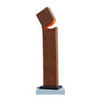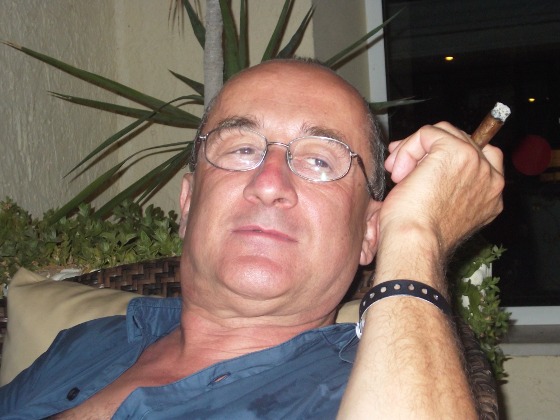... the love that moves the sun and the other stars.
For Mario Ricci, the ethical dimension is not an abstract category; it is the very experience of existence, it is the proof of his civil and religious identity included in his artistic work.
His biographical origins that brand him proudly tuscal or perhaps it is better to say “Etruscan”, mark his countenance and features, the clear volumes of his head, and plainly show in the energetic and explicit cut of doing, at times in the “14th century novel” disposition. His is a physiognomy that has already been seen in the examples of the Roman Republican portraitists, in that undemonstrative and proud glare of the first Italian civilization, in the sanguine vis of those peoples, that could hardly avoid being in debt to the nearby Etruscans, of their realistic imprint, even in facing death.
Mario Romano Ricci was born in Sansepolcro, in the province of Arezzo on 6 July 1949. Ricci is a Tuscan from the high valley of the Tiber bearing the evidence of the Etruscan and Roman Culture, a land that has historically produced and still produces artists with a rich and extroverted nature.
Ricci began to actively produce his art in 1983-1984. His watercolours exhibit an enormous amount of depth and show his research into three-dimensions. Today, his works illustrate the affinity between watercolours with sculpture. Neither one is forgiving, neither one leaves room for error.
Ricci works full time without affectation, except perhaps his need to relate himself with the matter in sacred harmony.
In his work, Ricci seeks mainly to express the universal parallels that provide unity and meaning to human life.
He began to exhibit his works and in Trentino, where he resides and works, won several competitions. Ricci met the sculptor Cirillo Gott in Rovereto, who encouraged him to never give up.
He has organized several solo exhibitions to great public acclaim; he been commissioned with monumental wooden, stone and bronze sculptures, but the matter that most captivates him is wood.
In Mario R. Ricci, we recognize a deep heritage of life, without which he would probably not have found the strength that sculpture requires
© 2024 Mario Romano Ricci





